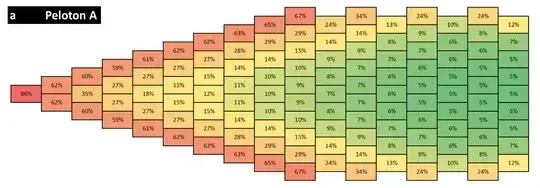The answers by Jeroen and eps show evidence that there is no penalty, but instead a benefit to the lead vehicle. Let me explain intuitively what is happening.
The drag on a moving vehicle has two components - a pushing force from high-pressure air in front of the vehicle, and a pulling force from the low-pressure wake (slipstream) behind it. What happens during a drafting maneuver is that the trailing car enters the wake in front of it, reducing the pressure on its bumper. This uses the low pressure slipstream area behind the leading car, but does not create it - the wake dragging on the leading vehicle (and possibly pulling the trailing one) exists regardless.
On the contrary, the trailing car also pushes air in front of it, to slightly increase the pressure in between the vehicles and benefit the leading car. The high-pressure area in front of a vehicle does not extend nearly as far as its low-pressure slipstream, so this "pushing" effect is much smaller. Effectively, the aerodynamic losses due to turbulence between the two cars are greatly reduced when they are close together, and the conserved energy is distributed between them.
Some additional information on the maneuver: Drafting (aerodynamics)
Interesting side-note: The wake of the leading car is not always beneficial, if it contains too much turbulence and the trailing car needs laminar flow for downforce, see this Quora answer
